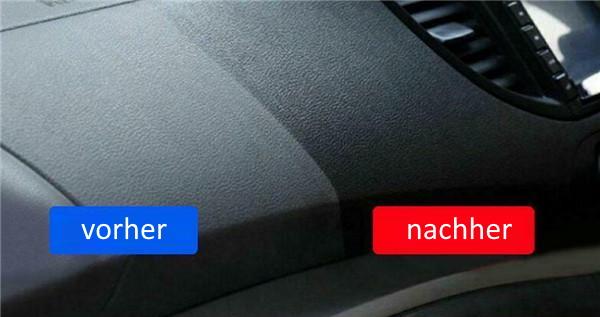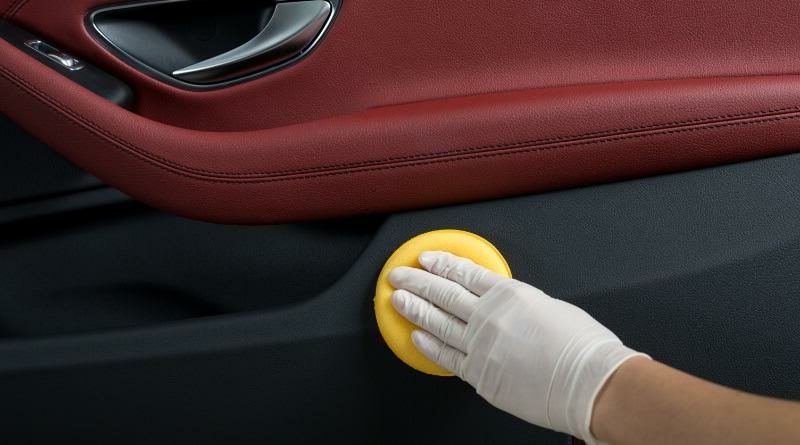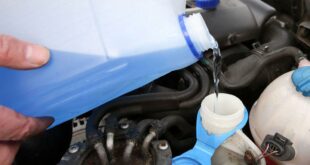If the vehicle is getting old, it is quickly noticeable. The black plastic in the interior is no longer really black, but rather milky grey. Constant exposure to the sun and daily use will cause the plastic to fade over the years. In the following article we explain how the plastic surfaces in the vehicle become really black again. First clean the plastic surfaces in general! First the surfaces gereinigt then the plastic can be refreshed. A is recommended for this Interior all-purpose cleaner. The cleaning agent is sprayed onto a microfiber cloth. It should be sprayed on the cloth and not directly on the dashboard if possible, so that the cleaning agent does not get onto adjacent non-plastic parts.
Refreshing the plastic in the car interior.
With the cleaned plastic surfaces, an optimal basis has been created for the Plastic care can be used optimally. The various care products for plastic are not only intended for cleaning, they should also restore the original color of the plastic and also protect the plastic from weathering. The care can usually be used in the same way as the all-purpose cleaner. So very simple. Simply put on a cloth and spread on the plastic surfaces. Usually there are hardly any differences. Here, however, has to come along Caution be worked on so that the agent really only gets on the plastic and other parts are not colored. After all, you don't want any discolouration in other areas. The effect of the plastic care can be seen immediately during use. If there are still residues after the treatment, they are simply removed with a microfiber cloth polished away.
FAQ
- There is another way to recycle plastic. For that one will heat gun used. The heat will melt the plastic surface slightly. When it has cooled down again, it has a fresh black color. However, this very effective method should be used with extreme caution. You can seriously burn yourself on the one hand with the hot air gun, on the other hand you do something wrong, then the plastic melts completely and the surface is permanently destroyed. So better one Plastic care use.
All information summarized.
Manual wear plus fingerprints and dust take a toll on the plastic. To do this, the plastic with the heat in the vehicle and the direct Solar radiation to fight. The result is that the protective layer of the plastic is peeling off more and more. The surface of the plastic starts to shine, looks greasy and loses its colour. In the worst case, even arise stress cracks. The following is a step-by-step guide on how to take perfect care of plastic interior parts. The required products are listed and there are helpful tips to make care easier.
The instructions, step-by-step:
- Step: Prepare the vehicle
– The area to be treated should not be heated by the sun.
– It is perfect when the vehicle is in the shade and the interior is well ventilated. - Step: Apply the cleaning and care product
– Apply the appropriate cockpit cleaner (e.g. Matt Effect) to a microfibre cloth.
– Distribute evenly on the plastic and allow to dry. - Step: polishing
– Polish any remaining residue. With a clean microfiber cloth.
– Remove all residues quickly, especially with adjacent materials.
Do not use household cleaners!
Household cleaners should be used when cleaning the interior of the vehicle be waived. They are often strong alkaline or acidic and therefore too aggressive for the plastic in the vehicle. The plastic can become brittle, form cracks or even burst. Only special cleaners, i.e. vehicle cleaners or vehicle care products, should be used. These agents are intended for the plastics in the vehicle and adapted to their challenges.
The following note is essential: For safety reasons, tuningblog recommends all repair, inspection and maintenance work exclusively to be carried out in a specialist workshop! Although our information is summarized to the best of our knowledge and belief, we cannot assume any liability for the content. All information is therefore "without guarantee".
Of course, that wasn't the end of it!
In this tuningblog category there are guides and instructions for common defects/repairs on the vehicle and for installing accessories/tuning parts. Our articles explain in a simple way common defects and the corresponding repairs, as well as explaining how the first signs of a defect become noticeable. In most cases, we also have initial clues to the repair instructions in our repair instructions approximate The costs of the pending repair are listed. The goal of our subcategory “Auto Repair Guide“ is to create a head start in knowledge for the next visit to the workshop with initial tips. This may save you from tedious troubleshooting and small things can perhaps be done directly on your own. The same applies, of course, to the installation of accessories/tuning parts. Here, too, we would like to help with the implementation with instructions and tips. There are many other posts on this as well. Below is an excerpt of the last and HERE there are all previous instructions:
"tuningblog.eu" - we keep you up to date on the subject of autotuning and car styling with our tuning magazine and present you with the latest tuned vehicles from all over the world every day. It's best to subscribe to ours Feed and will automatically be informed as soon as there is something new about this post, and of course also to all other contributions.
 tuningblog.eu Your magazine about tuning the car
tuningblog.eu Your magazine about tuning the car





